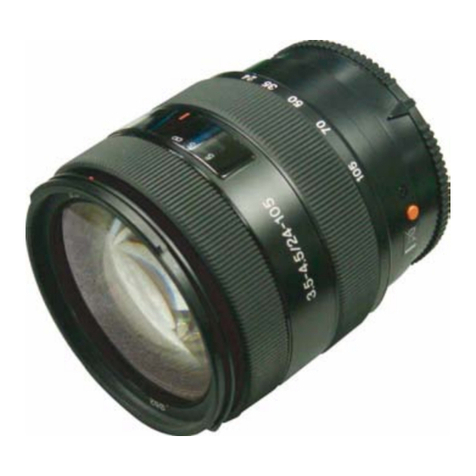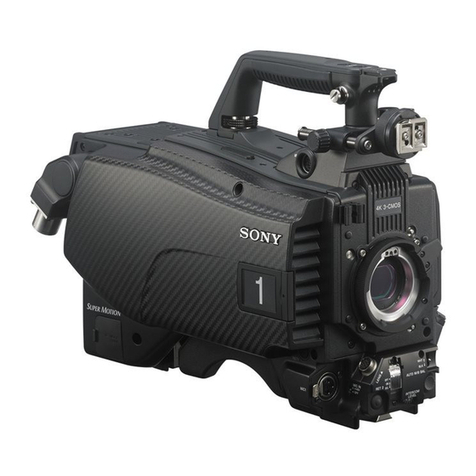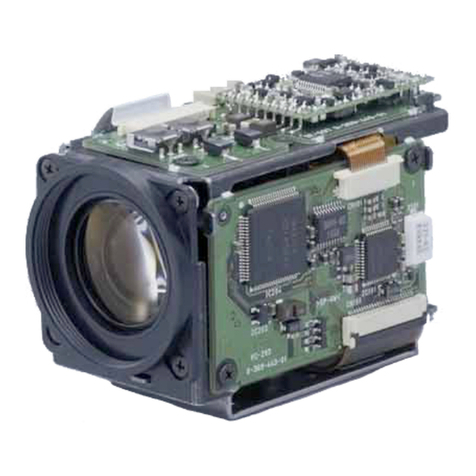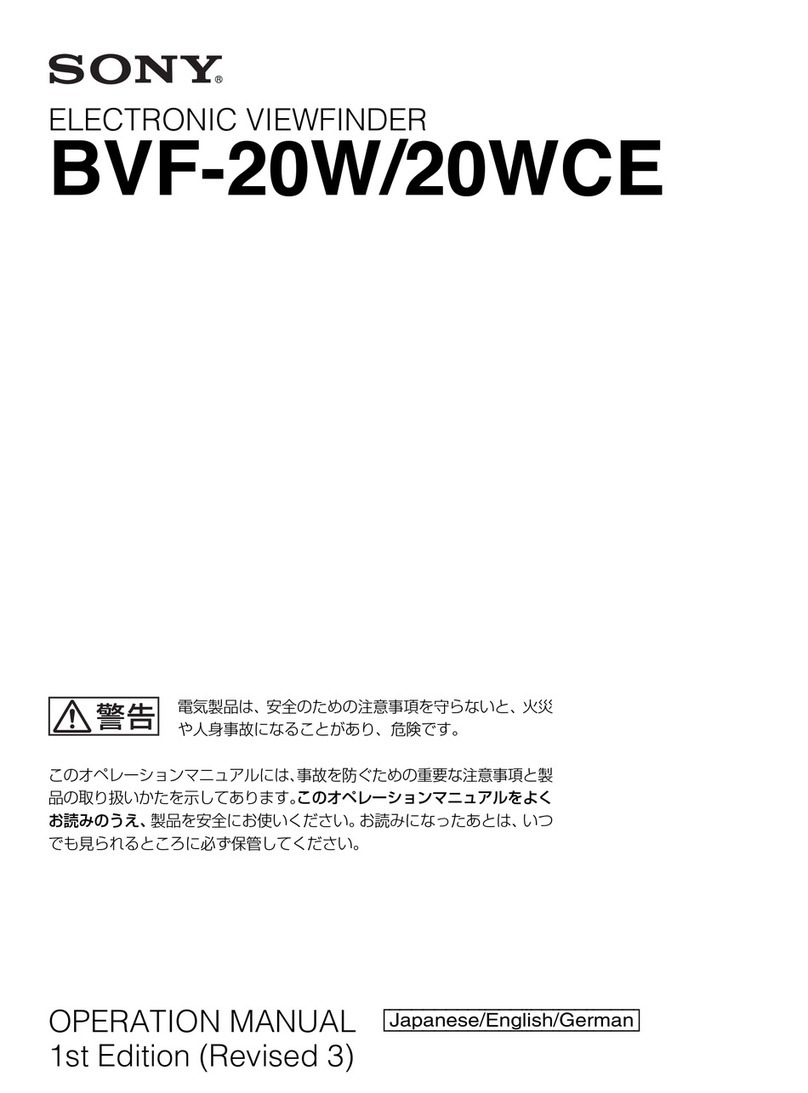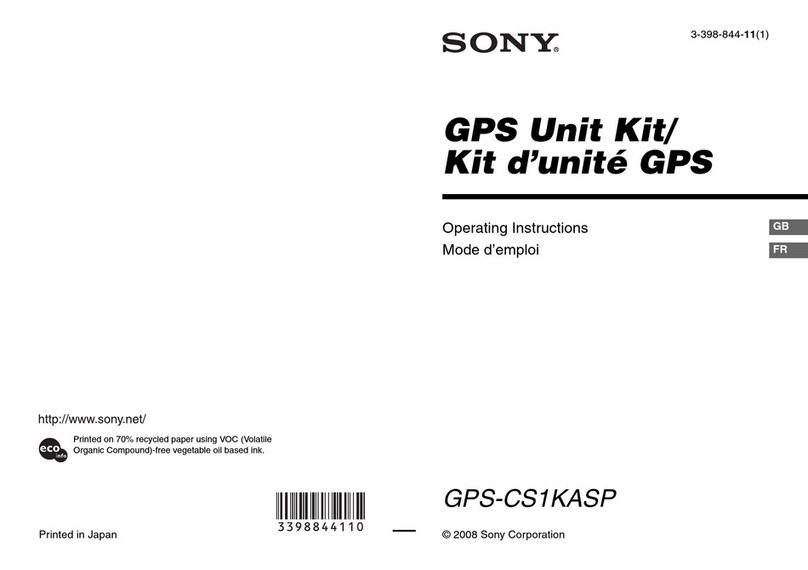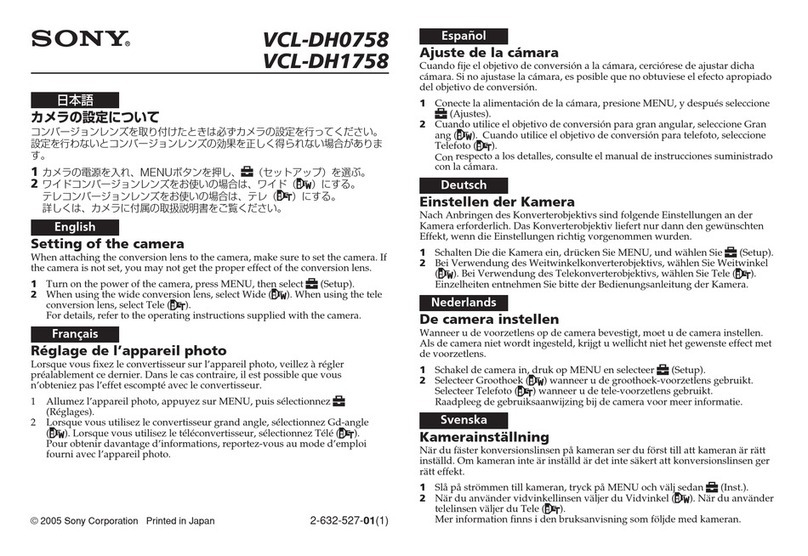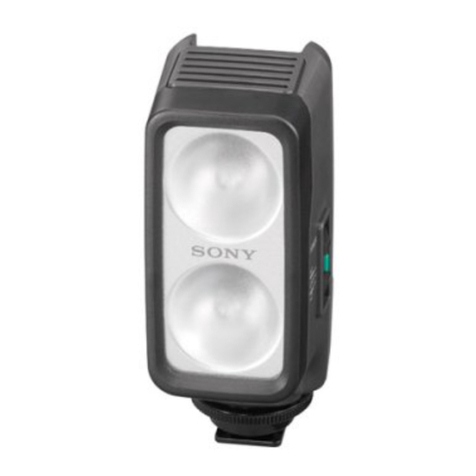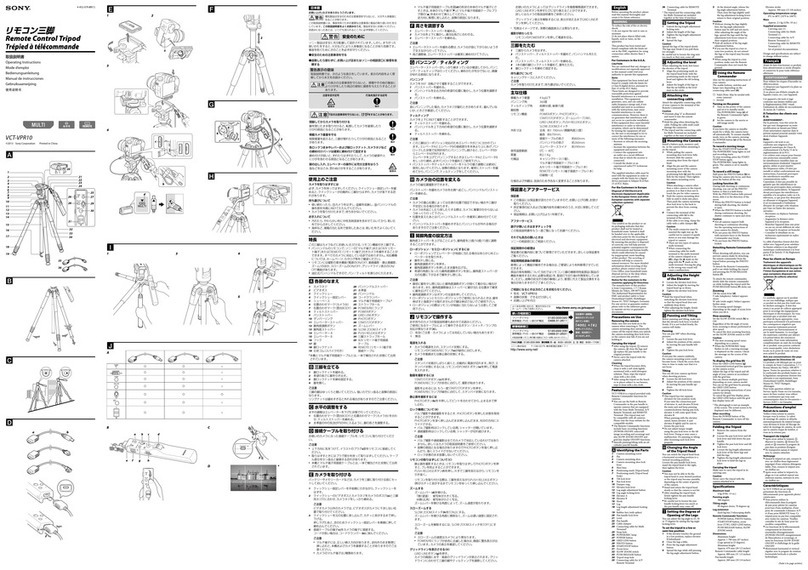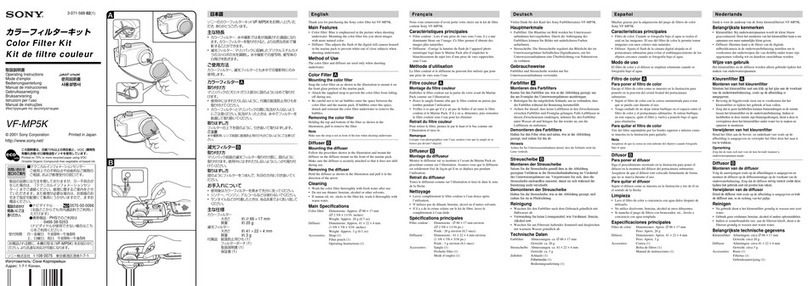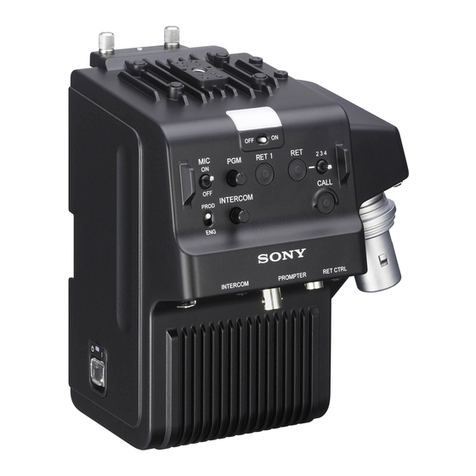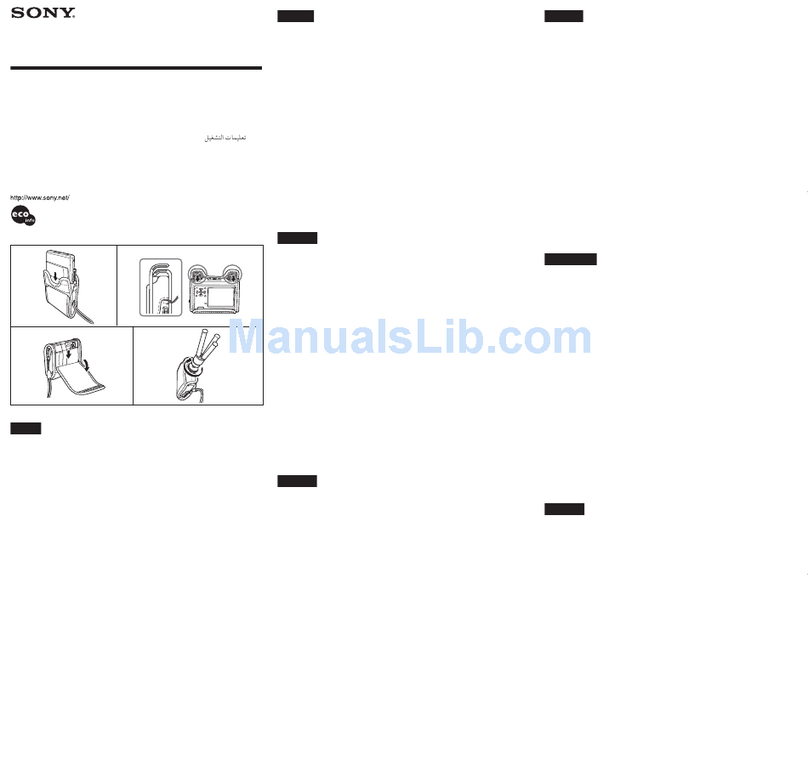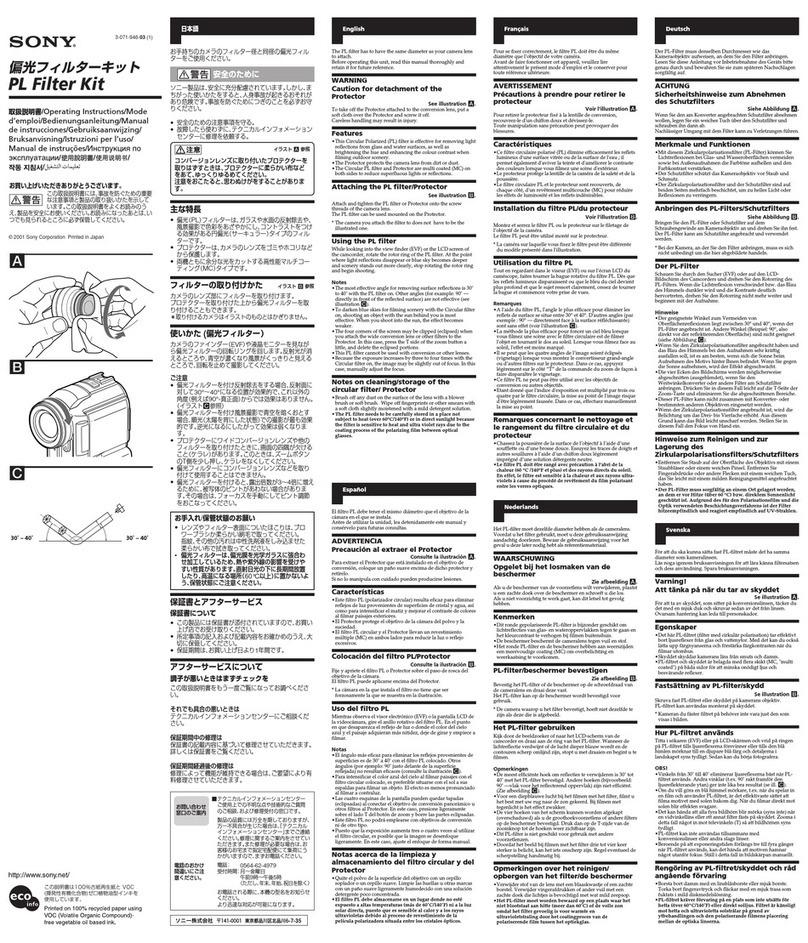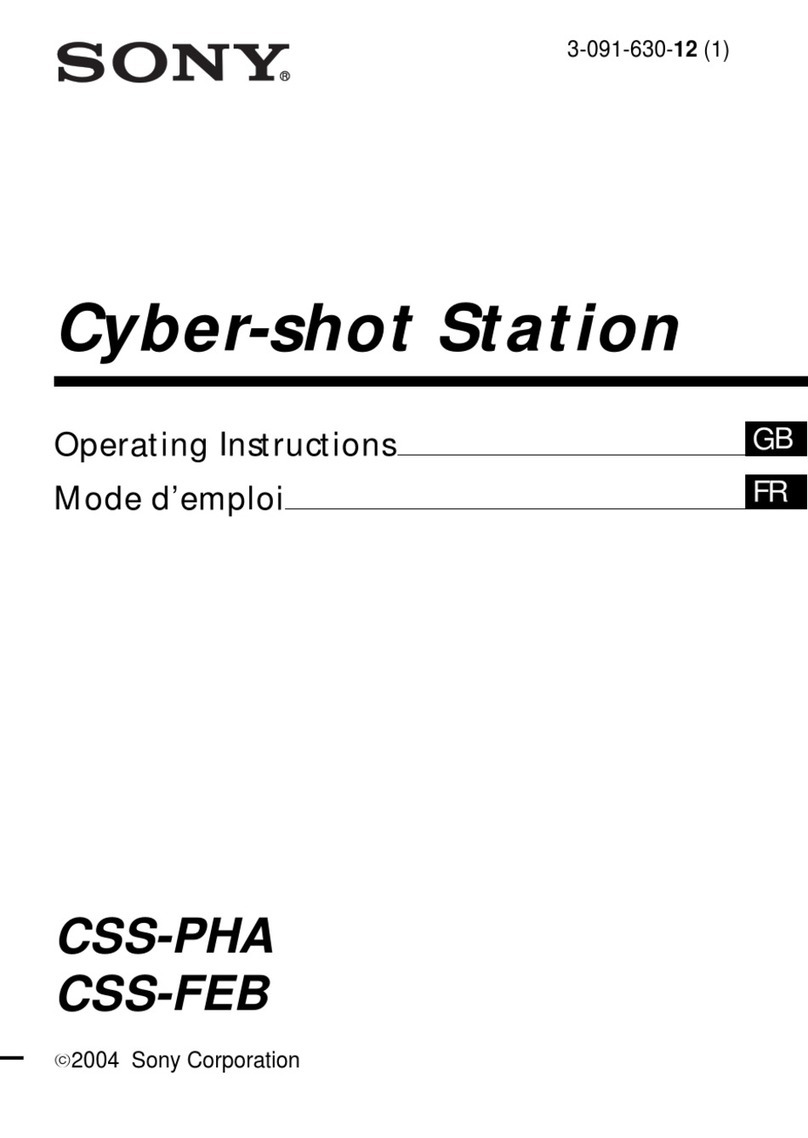
7
Basic Functions
Zoom
The FCB-EX780B/EX780BP/EX78B/EX78BP
employs a 25×optical zoom lens combined with a
digital zoom function; this camera allows you to zoom
up to 300x.
•Optical 25×, f = 2.4 to 60 mm (F 1.6 to F 2.7)
The horizontal angle of view is approximately 45
degrees (wide end) to 2.0 degrees (tele end).
Digital Zoom enlarges the center of the subject by
expanding each image in both the vertical and
horizontal directions. When 300×zoom is used, the
number of effective picture elements in each direction
reduces to 1/12 and the overall resolution deteriorates.
You can activate the zoom in the following two ways
•By pressing the TELE or WIDE buttons on the
camera itself
•Using a VISCA Command
Using Standard Mode
Using Variable Mode
There are eight levels of zoom speed.
Direct Mode
Setting the zoom position enables quick
movement to the designated position.
Digital Zoom ON/OFF
In these standard and variable Speed Modes, it is necessary
to send Stop Command to stop the zoom operation.
•The Zoom Mode supports a Combined Mode and a
Separate Mode.
Combined Mode
This is the previously existing zoom method.
After the optical zoom has reached its maximum
level, the camera switches to Digital Zoom Mode.
Separate Mode
In this mode, Optical Zoom and Digital Zoom can
be operated separately. You can use digital zoom
magnification at any time from within any level of
optical magnification.
Focus
Focus has the following modes, all of which can be set
using VISCA Commands.
• Auto Focus Mode
The minimum focus distance is 35 mm at the optical
wide end and 800 mm at the optical tele end, and is
independent of the digital zoom.
The AutoFocus (AF) function automatically adjusts
the focus position to maximise the high frequency
content of the picture in a center measurement area,
taking into consideration the high luminance and
strong contrast components.
- Normal AF Mode
This is the normal mode for AF operations.
- Interval AF Mode
The mode used for AF movements carried out at
particular intervals. The time intervals for AF
movements and for the timing of the stops can be
set in one-second increments using the Set Time
Command. The initial value for both is set to five
seconds.
- Zoom Trigger Mode
When the zoom is changed with the TELE or the
WIDE buttons, the pre-set value (initially set at 5
seconds) becomes that for AF Mode. Then, it
stops.
AF sensitivity can be set to either HIGH or LOW.
- HIGH
Reaches the highest focus speed quickly. Use this
when shooting a subject that moves frequently.
Usually, this is the most appropriate mode.
- LOW
Improves the stability of the focus. When the
lighting level is low, the AF function does not take
effect, even though the brightness varies,
contributing to a stable image.
When used for 24 hours continuously, initialization
of lens system once a day is recommended because
this will make the life of lens longer. The Initialize
Lens Command takes a little less than 3 seconds to
initialize the focus and zoom.
• Manual Focus Mode
Manual Focus has both a Standard Speed Mode and a
Variable Speed Mode. Standard Speed Mode focuses
at a fixed rate of speed. Variable Speed Mode has
eight speed levels that can be set using a VISCA
Command.
• One Push Trigger Mode
When a Trigger Command is sent, the lens moves to
adjust the focus for the subject. The focus lens then
holds that position until the next Trigger Command is
input.
• Infinity Mode
The lens is forcibly moved to a position suitable for
an unlimited distance.
• Near Limit Mode
Can be set in a range from 1000 (∞) to C000 (35 mm).

